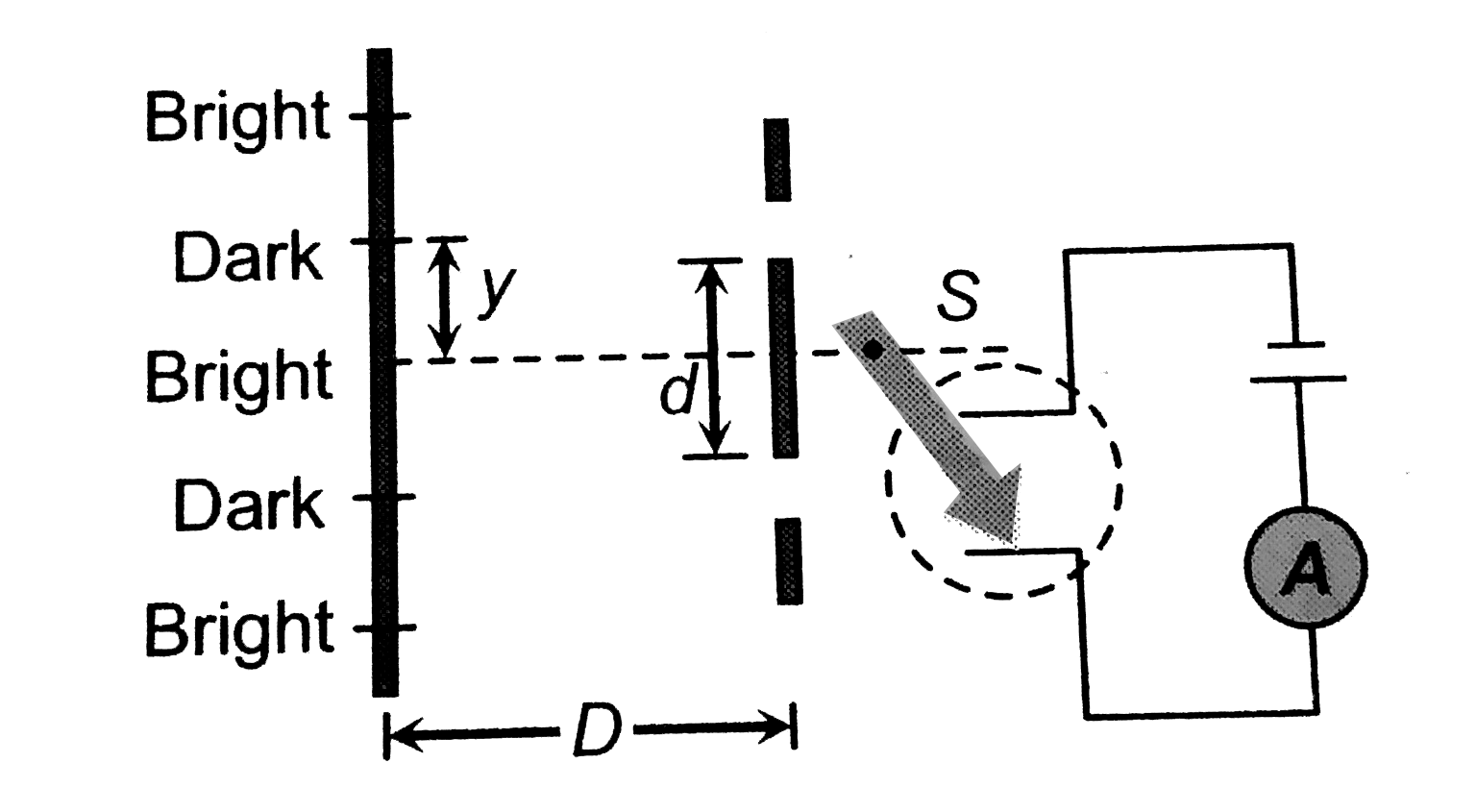The stopping potential necessary to reduce the phtoelectric current of zero-
is directly proprotional to wavelength of incident light.
uniformly increases with the wavelength of incident light.
directly proportional to frequency of incident light.
uniformly increases with the frequnecy of incident light.
The correct Answer is:D
To solve the problem regarding the stopping potential necessary to reduce the photoelectric current to zero, we can follow these steps:
Step 1: Understand the Concept of Stopping Potential
The stopping potential (V₀) is the potential difference needed to stop the photoelectrons emitted from a material when light shines on it. It is the voltage required to reduce the photoelectric current to zero.
Step 2: Relate Stopping Potential to Kinetic Energy
According to the photoelectric effect, the stopping potential is related to the kinetic energy (KE) of the emitted photoelectrons. The equation for kinetic energy in terms of stopping potential is:
KE=eV₀
where e is the charge of the electron.
Step 3: Use Einstein's Photoelectric Equation
Einstein's photoelectric equation states:
KE=hν−ϕ
where:
- h is Planck's constant,
- ν is the frequency of the incident light,
- ϕ is the work function of the material.
Step 4: Combine the Equations
From the two equations, we can equate the kinetic energy expressions:
eV₀=hν−ϕ
Step 5: Solve for Stopping Potential
Rearranging the equation to solve for the stopping potential gives:
V₀=hν−ϕe
Step 6: Analyze the Relationship with Frequency
From the equation V₀=hν−ϕe, we can see that as the frequency ν of the incident light increases, the stopping potential V₀ also increases linearly, provided that the work function ϕ remains constant for a given material.
Conclusion
Thus, the stopping potential necessary to reduce the photoelectric current to zero increases linearly with the frequency of the incident light.
---
The stopping potential (V₀) is the potential difference needed to stop the photoelectrons emitted from a material when light shines on it. It is the voltage required to reduce the photoelectric current to zero.
According to the photoelectric effect, the stopping potential is related to the kinetic energy (KE) of the emitted photoelectrons. The equation for kinetic energy in terms of stopping potential is:
KE=eV₀
where e is the charge of the electron.
Einstein's photoelectric equation states:
KE=hν−ϕ
where:
- h is Planck's constant,
- ν is the frequency of the incident light,
- ϕ is the work function of the material.
From the two equations, we can equate the kinetic energy expressions:
eV₀=hν−ϕ
Rearranging the equation to solve for the stopping potential gives:
V₀=hν−ϕe
From the equation V₀=hν−ϕe, we can see that as the frequency ν of the incident light increases, the stopping potential V₀ also increases linearly, provided that the work function ϕ remains constant for a given material.
Thus, the stopping potential necessary to reduce the photoelectric current to zero increases linearly with the frequency of the incident light.
Topper's Solved these Questions
- BOOK - ALLENCHAPTER - SIMPLE HARMONIC MOTIONEXERCISE - Exercise-0219videos
SIMPLE HARMONIC MOTION
- BOOK - ALLENCHAPTER - SIMPLE HARMONIC MOTIONEXERCISE - Exercise- 3 Match The Column1videos
SIMPLE HARMONIC MOTION
- BOOK - ALLENCHAPTER - SIMPLE HARMONIC MOTIONEXERCISE - Example1videos
SIMPLE HARMONIC MOTION
- BOOK - ALLENCHAPTER - RACEEXERCISE - Basic Maths (Wave Motion & Dopplers Effect) (Stationary waves & doppler effect, beats)25videos
RACE
- BOOK - ALLENCHAPTER - TEST PAPEREXERCISE - PHYSICS4videos
TEST PAPER
Similar Questions
Knowledge Check
- Question 1 - Select One or More
At the stopping potential
AThe electrons are not at all emitted by the plateBThe electrons are emitted by the plate but reverse their direction of motion just before reaching the collector plateCThe most energetic electrons emitted reverse their direction of motion just before reaching the other plateDThe collector plate is negatively charged with respect to the emitter - Question 2 - Select One
The stopping potential (V0)
ADepends upon the angle of incident lightBDepends upon the intensity of incident lightCDepends upon the surface nature of the substanceDIs independent of the intensity of the incident light - Question 3 - Select One
Radiation of wavelength 546 nm falls on a photo cathode and electrons with maximum kinetic energy of 0.18 eV are emitted. When radiation of wavelength 185 nm falls on the same surface, a (negative) stopping potential of 4.6 V has to be applied to the collector cathode to reduce the photoelectric current to zero. Then, the ratio he is
A6.6×10−15JsC−1B4.14×10−15JsC−1C6.6×10−34JsC−1D4.12×10−34JsC−1
The magnitude of stopping potential for the photoelectric effect is
View SolutionThe stopping potential of a given photoelectric device is depended on
View SolutionThe threshold frequency of the metal of the cathode in a photoelectric cell is 1×1015Hz. When a certain beamm of light is incident on the cathode, it is found that a stopping potential 4.144 V is required to reduce the current to zero. The frequency of the incident radiation is
View SolutionStopping potential for photo electrons
View SolutionIn the following arrangement y=1.0mm,d=0.24mm and D=1.2m. The work function of the material of the emitter is 2.2eV. The stopping potential V needed to stop the photo current will be
 View Solution
View Solution

